Northern Living: Temperature, Planting and Imbibition
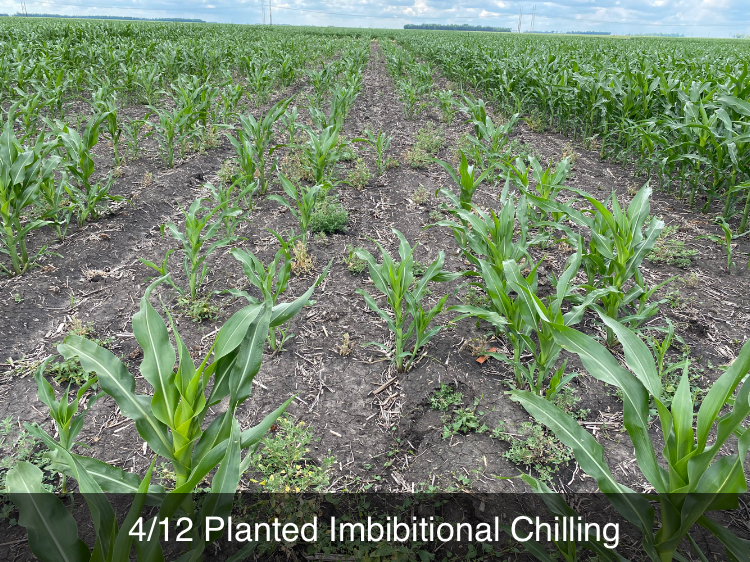
If you search our online blogs for “temperature and planting,” 28 articles have been written since 2014! By far, it is our most popular topic. Living where we do, this won’t change.
The typical frost-free window for much of the region is from May 10 to Oct. 1 – only 145 days long. It’s depressing to think that we can have a frost event 60 percent of the year!
In 2004, I was working in the potato industry. We had a field between Verndale and Nimrod, Minn., that froze every month that summer: June, July, and August! This culminated Aug. 19 – 21, freezing three nights in a row and killing many of the corn fields from Long Prairie to Park Rapids.
On the flip side, we now have 80-day hybrids that will produce 230+ bushel corn, and we are raising corn in areas that most of our grandparents would shake their heads at in disbelief!
The combination of “Iowa-like” yields, new corn areas, and a short season is why the topic of planting and temperature is never going away.
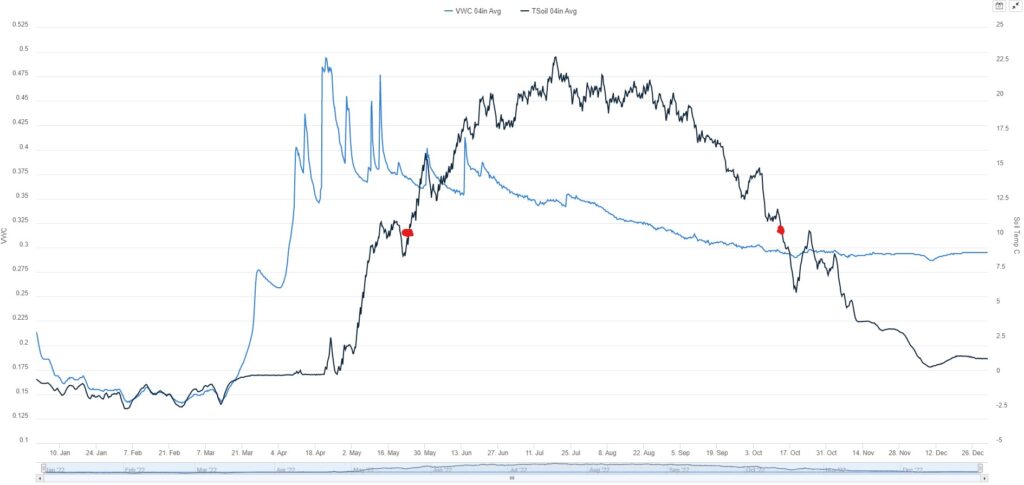
Soil moisture and temperature from Jan. 1, 2022, to Dec. 31, 2022. (https://public.eagle.io/public/dash/c3enb73ce4ehsk7)
Corn needs soil temperatures of about 50 degrees to germinate. This is a physiological truth, and doesn’t change by brand or hybrid. According to the NDAWN station at Grand Forks, at a 4” depth, the soil doesn’t reach 50 degrees on average until around May 10.
Don’t get me wrong, I love early-planted corn! Some of the best yields I have ever been involved with happened when we planted around April 11th, but that doesn’t mean it’s the right answer for every year.
Watching soil temperatures and avoiding imbibitional chilling are crucial factors. On the page to the right are the five different planting times we tested in 2021. We plan to expand the number of planting dates in the future! By exploring how early and late we can plant our goal is to exaggerate germination losses, proving to growers how bad this can be.
Like many of the last five seasons, conditions have been less than ideal for quality data, so we are not recommending planting on May 24. The May 24 planting date rose to the top during the drought of ‘21. Many of the early plantings all died of drought before the August rains came. However, you can see the early planting in April was a disaster, and it also carried over into the yield.
Results from our 2021 trial:
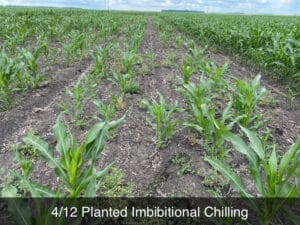
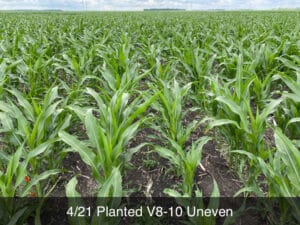
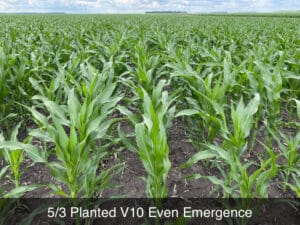
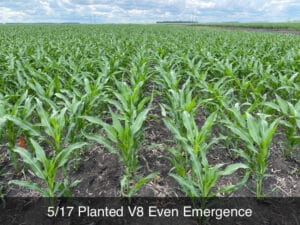
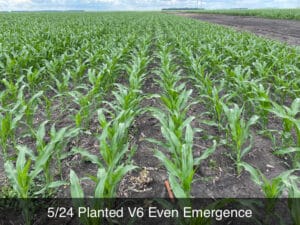
Watch out for claims that corn can be planted into 40-degree soil temps. Solid agronomics tell us that 40-degrees is simply too cold for germination – which means those claims are marketing spin. We need 50-degree soil temperatures to ensure the best stand and the highest yield. I don’t stress if the soil temperatures dip three days after planting, as there tends to be a cold spell every year after planting. It is, however, important to keep an eye on the current temperatures and the forecast for a couple of days. In order for your corn to have it’s best start, try your best to make sure it will have those steady, above 50 degree soil temperatures for that three-day window.
Key Takeaways:
- Corn is here to stay in the North.
- We have the genetic potential to break 200 bushels anywhere in our geography if conditions will allow.
- We need to do a better job of monitoring soil temperatures at planting! Of all the things we can control, this is the easiest and can have the biggest impact.
- Every year is different, watching the extended forecast in combination with soil temperatures will ensure true top-end every year.











